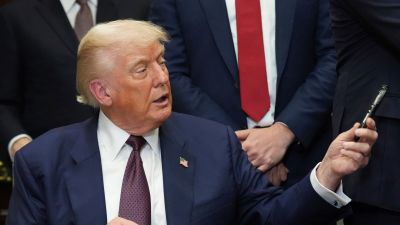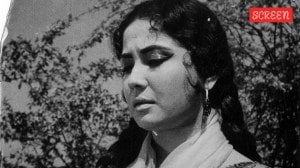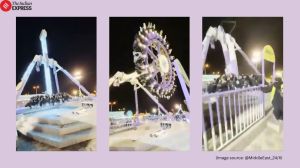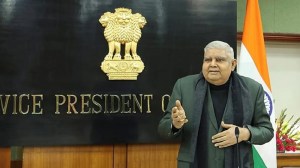Lessons in compassion, love and tolerance at a Delhi synagogue
Originally a lawyer, the Rabbi felt his true calling was to “keep the flame of Judaism burning”. Yet what he propounds the most is interfaith peace.
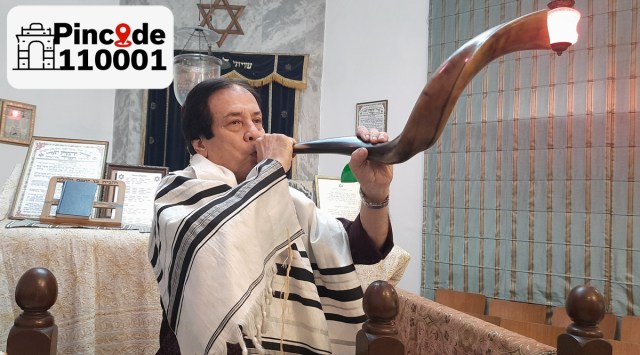 The synagogue’s Rabbi Ezekiel Isaac Malekar leads the Friday prayers here every week. (Express)
The synagogue’s Rabbi Ezekiel Isaac Malekar leads the Friday prayers here every week. (Express) Walking down the posh neighbourhood of Humayun Road near Khan Market, one is likely to miss the inconspicuous gates leading to one of Delhi’s oldest synagogues. Serving around 15 Jewish families in the capital, along with diplomats and tourists, the synagogue has quietly coexisted amongst the grand houses in Lutyen’s neighbourhood since the 1950s.
Behind the gates, the Judah Hyam synagogue features a powder blue facade, adorned with Star of David motifs above its entrance.
At the centre of the prayer room, you will find the bimah, an elevated platform, with a tivah or a reader’s desk, adorned with opulent ochre and cream throws with gold embroidery.
In one corner stands the Aron Kodesh, a sacred cabinet containing the Torah, the Jewish sacred scriptures, behind a grey curtain. The room is illuminated by chandeliers, and a brass incense burner suspended in front of the Aron Kodesh.
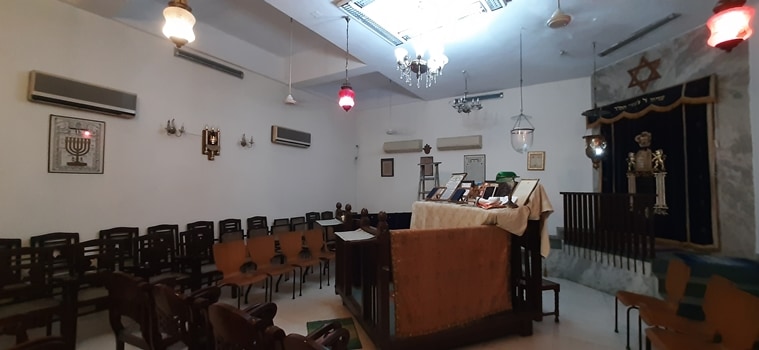 Inside the Judah Hyam synagogue. (Express)
Inside the Judah Hyam synagogue. (Express)
The Jewish community is said to have come to India 2,000 years ago in Cochin as traders of spices and silk.
The subcontinent also finds mention in the Book of Esther of the Old Testament where King Ahasuerus’s kingdom is described to stretch from the banks of the Sindh to Ethiopia.
Over time, the Jewish community in India saw three distinct groups being formed: the Bene Israeli, the Baghdadi Jews, and the Cochin Jews. The Cochin Jews are said to be the first to arrive on the shores of India as traders in 50 CE. The community was apparently granted a village to stay by the rulers of Cochin, called Anjuvannam.
The Bene Israeli, the largest Jewish group in India, are primarily found in the Maharashtra and Konkan regions; local legend suggests that they arrived around 1600 to 1800 years ago after a shipwreck on the Konkan coast and found shelter in a village called Nawgaon, near what is now Mumbai.
 Originally a lawyer, the Rabbi felt his true calling was to “keep the flame of Judaism burning”. Yet what he propounds the most is interfaith peace. (Express file photo by Praveen Khanna)
Originally a lawyer, the Rabbi felt his true calling was to “keep the flame of Judaism burning”. Yet what he propounds the most is interfaith peace. (Express file photo by Praveen Khanna)
Baghdadi Jews, considered one of the more recent Jewish communities to set foot in India, migrated in the 18th and 19th centuries and settled in British port cities such as Calcutta (now Kolkata), Bombay (now Mumbai), and Rangoon (now Yangon in Myanmar), where they played a significant role in developing a thriving entrepreneurial class.
Smaller sub-sects also exist such as Bnei Menashe in parts of Manipur and Mizoram, and the Bene Ephraim from Machilipatnam in Andhra Pradesh who claim to be descendants of one of the lost 10 tribes of Israel.
Both sects identify with the sons of Prophet Joseph.
The Judah Hyam synagogue was originally built in 1956 by Baruch Ben-Sion Benjamin, the president of the Jewish Welfare Association.
In the 1970s, the synagogue was expanded with a library which contains books and spiritual scriptures from nine major faiths, and an interfaith study centre. In the winters, the synagogue welcomes around 10,000 visitors from across the world.
The synagogue’s Rabbi Ezekiel Isaac Malekar leads the Friday prayers here every week.
But here’s the twist: Rabbi Malekar likes to invite everyone to these prayers—Jewish or non-Jewish. This is not the only rule that Rabbi Malekar likes to bend: He insists on having no partition between the male and female attendees, for the minyan (quorum required for a prayer meeting) he counts to 10 people instead of 10 men, and he is also open to performing interfaith marriages.
Originally a lawyer, the Rabbi felt his true calling was to “keep the flame of Judaism burning”. Yet what he propounds the most is interfaith peace.
“India is the only place in the world where the Jewish people didn’t face persecution,” he said.
According to him, that is the true culture of India. “All religions basically say the same thing — to have compassion, love and tolerance,” he added.


